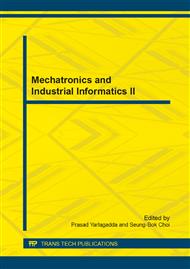p.136
p.141
p.149
p.154
p.160
p.164
p.169
p.174
p.179
Forecasting High Frequency Data: An ARMA-Soft RBF Network Model for Time Series
Abstract:
In the article we alternatively develop forecasting models based on the Box-Jenkins methodology and on the neural approach based on classic and fuzzy logic radial basis function neural networks. We evaluate statistical and neuronal forecasting models for monthly platinum price time series data. In the direct comparison between statistical and neural models, the experiment shows that the neural approach clearly improve the forecast accuracy. Following fruitful applications of neural networks to predict financial data this work goes on. Both approaches are merged into one output to predict the final forecast values. The proposed novel approach deals with nonlinear estimate of various radial basis function neural networks.
Info:
Periodical:
Pages:
160-163
Citation:
Online since:
July 2014
Authors:
Keywords:
Price:
Сopyright:
© 2014 Trans Tech Publications Ltd. All Rights Reserved
Share:
Citation:


